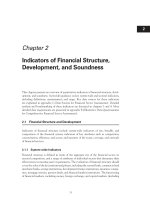COURSE AND CONDUCT OF LABOR AND DELIVERY ppt
Bạn đang xem bản rút gọn của tài liệu. Xem và tải ngay bản đầy đủ của tài liệu tại đây (741.12 KB, 46 trang )
CHAPTER 6
COURSE AND CONDUCT OF LABOR AND DELIVERY
153
153
6
COURSE AND CONDUCT
OF LABOR AND DELIVERY
CHAPTER
Labor is the normal process of coordinated, effective involuntary
uterine contractions that lead to progressive cervical effacement
and dilatation and descent and delivery of the newborn and pla-
centa. Near its termination, labor may be augmented by voluntary
bearing-down efforts to assist in delivery of the conceptus.
False labor is characterized by irregular (both in interval and
duration), brief contractions without fundal dominance, cervical
change, or a lower station of the fetal vertex or breech.
Dilatation of the cervix is the diameter of the cervical os ex-
pressed in centimenters (0–10). Effacement is cervical thinning that
occurs before and especially during first stage labor. Effacement of
the cervix is expressed as a percentage of cervical length (normally
ϳ2.5 cm) (Figs. 6-1, 6-2). An uneffaced cervix is 0%; one about
0.25 in length is 100% effaced. Effacement and dilatation are caused
by retraction (takeup) of the cervix toward the uterine corpus, not
by pressure of the presenting part.
The initiation of labor in the human is poorly understood.
Labor can be triggered by one or more significant endocrine or
physical changes, for example, abdominal trauma. The onset of la-
bor can occur at any time after well-established pregnancy, but the
likelihood increases as term is approached. Labor can be induced
or stimulated (augmented) by oxytocic agents (e.g., oxytocin or
prostaglandin E
2
) (Fig. 6-3).
In ϳ10% of gravidas, the fetal membranes rupture before the
onset of labor. This reduces the capacity of the uterus, thickens the
uterine wall, and increases uterine irritability. Labor usually follows.
At term, 90% will be in labor within 24 h after membrane rupture.
If labor does not begin in 24 h, the case must be considered com-
plicated by prolonged rupture of the membranes.
Immediately before or early in labor, a small amount of red-
tinged mucus may be passed (bloody show or mucous plug). This
is a collection of thick cervical mucus often mixed with blood and
Copyright 2001 The McGraw-Hill Companies. Click Here for Terms of Use.
BENSON & PERNOLL’S
154 HANDBOOK OF OBSTETRICS AND GYNECOLOGY
is evidence of cervical dilatation and effacement and, frequently,
descent of the presenting part.
The beginning of true labor is marked by increasingly frequent,
forceful, prolonged, and, finally, regular uterine contractions. Low
backache may precede or accompany the uterine contractions
(pains). Each contraction starts with a gradual buildup of intensity,
and a similar dissipation follows the peak. Normally, the contrac-
tion will be at its height before discomfort is felt. Dilatation of the
lower birth canal almost always will cause deep pelvic or perineal
pain. Nonetheless, occasional nulliparas and some multiparas may
have a brief, virtually pain-free labor.
Labor entails the interaction of the so-called 4Ps.
●
The passenger (the fetal size, presentation, position)
●
The pelvis (size and shape)
●
The powers (effective forces of labor, e.g., uterine contractions)
●
The placenta (an obstruction if implanted low in the
uterus)
FIGURE 6-1. Dilatation and effacement of the cervix in a primipara.
FIGURE 6-2. Dilatation and effacement of the cervix in a multipara.
FIGURE 6-3. Production of prostaglandins in human parturition.
(Modified after Liggins.) (From M.L. Pernoll and R.C. Benson, eds. Current Obstetric &
Gynecologic Diagnosis & Treatment, 6th ed. Lange, 1987.)
155
BENSON & PERNOLL’S
156 HANDBOOK OF OBSTETRICS AND GYNECOLOGY
Each of these factors, alone or in combination, can make for a
normal or a complicated labor and delivery. For example, if the fe-
tus is large and the pelvis is small, labor may be prolonged or
progress may be impossible despite strong contractions, even with
a placenta normally implanted in the fundus.
NORMAL LABOR
Since, hopefully, the end result of labor is the vaginal delivery of
the fetus, membranes, and placenta, the method of judging its
progress is based on assessments toward that end. The first stage
of labor begins with the onset of labor and ends with complete
FIGURE 6-4. Relationship between cervical dilatation and descent of the
presenting part in a primipara. L, latent phase; A, acceleration phase; M, phase
of maximum slope; D, deceleration phase; and 2, second stage.
(From M.L. Pernoll and R.C. Benson, eds. Current Obstetric & Gynecologic Diagnosis
& Treatment, 6th ed. Lange, 1987.)
(10 cm) dilatation of the cervix. The first stage is the longest,
averaging 8–12 h for primigravidas or 6–8 h for multiparas. How-
ever, the first stage of labor may be markedly shorter or longer de-
pending on the 4Ps.
Labor is a very dynamic process, and contractions should in-
crease steadily in regularity, intensity, and duration. This is not al-
ways the case, and one must set limits concerning the progress of
labor (Figs. 6-4, 6-5).
It is useful to divide the first stage of labor into two phases.
Thus, the latent phase of labor begins with the onset of regular uter-
ine contractions and extends to the start of the active phase of cer-
vical dilatation (ϳ3–4 cm).
CHAPTER 6
COURSE AND CONDUCT OF LABOR AND DELIVERY
157
FIGURE 6-5. Composite mean curves for descent (solid line) and dilata-
tion (broken line) for 389 multiparas. L, latent phase; A, acceleration phase;
M, phase of maximum slope; D, deceleration phase; and 2, second stage. Re-
lationship is shown between acceleration period of descent and maximum
slope of dilatation (shaded area), between latent period of descent and latent
plus acceleration phases of dilatation, and between maximum slope of de-
scent and deceleration plase plus second stage.
(Redrawn from Friedman and Sachtleben. Am J Obstet Gynecol 1965;93:526.)
BENSON & PERNOLL’S
158 HANDBOOK OF OBSTETRICS AND GYNECOLOGY
The second stage of labor begins when the cervix becomes fully
dilated and ends with the complete birth of the infant. The second
stage normally lasts ,30 min. While one should be concerned when
the second stage extends longer than 1 h (based on fetal morbidity
and mortality). Safety for the fetus may be assured by thoughtful
monitoring.
The third, or placental, stage of labor is the period from birth
of the infant to 1 h after delivery of the placenta. The rapidity of
separation and means of recovery of the placenta determine the du-
ration of the third stage (Fig. 6-6).
MANAGEMENT OF THE FIRST STAGE
OF LABOR
INITIAL EXAMINATION
AND PROCEDURES
●
Obtain a history of relevant medical details following the
last examination.
FIGURE 6-6. Major types of deviation from normal progress of labor may
be detected by noting dilatation of the cervix at various intervals after labor
begins.
(From K.P. Russell. In: R.C. Benson, ed. Current Obstetric & Gynecologic Diagnosis &
Treatment, 4th ed. Lange, 1982.)
CHAPTER 6
COURSE AND CONDUCT OF LABOR AND DELIVERY
159
●
Record the patient’s vital signs (temperature, pulse, and BP).
Examine a clean-catch urine specimen for proteinuria and
glycosuria.
●
Do a brief general physical examination.
●
Palpate the uterus to determine the fetal presentation, position,
and engagement (Leopold’s maneuvers) (Fig. 6-7). Auscultate
the fetal heartbeat, and mark the skin where the heartbeat is
FIGURE 6-7. Leopold’s maneuvers. Determining fetal presentation (A and
B), position (C), and engagement (D).
BENSON & PERNOLL’S
160 HANDBOOK OF OBSTETRICS AND GYNECOLOGY
loudest to note the shift and descent of the point of maximal
intensity with progressive labor. This is evidence of internal
rotation and descent of the fetus (the mechanism of labor).
●
Note the frequency, regularity, intensity, and duration of
uterine contractions and the myometrial tone with and be-
tween contractions. Observe the patient’s reactions and her
tolerance of labor. Restlessness and discomfort often de-
velop as labor progresses.
●
Check for vaginal bleeding or leakage of amniotic fluid.
Nitrazine indicator paper will turn from green to yellow
when moistened with amniotic fluid (pH 7.0). Other tests
may be used in doubtful cases.
●
Examine the patient vaginally and record both the time and
results of the examination. Use a surgically clean glove.
Identify the fetal presenting part and its station in rela-
tion to the level of the ischial spines. Station is the level
of the head or breech in the pelvis. If the presenting part
is at the spines, it is said to be at “zero station.” If above
the spines, the distance is stated in minus figures (Ϫ1 cm,
Ϫ2 cm, Ϫ3 cm, and “floating”). If below the spines, the
distance is noted in plus figures (ϩ1 cm, ϩ2 cm, ϩ3 cm,
and “on the perineum”) (Fig. 6-8). When the most inferior
FIGURE 6-8. Stations of the fetal head.
part of the head is at the level of the ischial spines, the
station is zero.
Station zero is assumed by projection to be actual
engagement, that is, the biparietal diameter at the level
of the inlet. However, with considerable molding, caput
succedaneum, or a sincipital presentation of the head,
the biparietal diameter may be a significant distance
above the inlet even though the tip of the vertex is at the
spines without true engagement.
Dilatation of the cervix by direct palpation is expressed
as the diameter of the cervical opening in centimeters.
A diameter of 10 cm constitutes full dilatation.
Effacement of the cervix (process of thinning out) may
occur before labor in the nulligravida but is less likely
before the first stage of labor in the multigravida.
The position of the presenting part usually can be con-
firmed by internal examination.
Vertex presentations (Fig. 6-9). The fontanelles and the
sagittal suture are palpated. The position is determined
by the relation of the fetal occiput to the mother’s right
or left side. This is expressed as OA (occiput directly
anterior), LOA (left occiput anterior), LOP (left occiput
posterior), and so on.
Breech presentations are determined by the position of
the infant’s sacrum in relation to the mother’s right or
left side. This is expressed as SA (sacrum directly ante-
rior), LSA (left sacrum anterior), LSP (left sacrum pos-
terior), and so on.
Face presentation is caused by extension of the fetal
head on the neck. The chin, a prominent and identifiable
facial landmark, is used as the point of reference. As
with vertex presentations, the position of the fetal chin
is related to the anterior or posterior portion of the left
or right side of the mother’s pelvis. This is expressed as
RMP (right mentum posterior) and so on.
Brow, bregma, and sinciput presentations are presenta-
tions midway between flexion and extension. These usu-
ally are temporary attitudes that convert during labor to
face or occiput presentation.
Transverse presentations occur when the long axis of the
fetal body is perpendicular to that of the mother. One
shoulder (acromion) will occupy the superior strait, but
it will be considerably to the right or left of the midline.
Transverse presentations are designated by relating the
infant’s inferior shoulder and back to the mother’s back
CHAPTER 6
COURSE AND CONDUCT OF LABOR AND DELIVERY
161
FIGURE 6-9. Vertex presentation.
162
or abdominal wall. Thus, LADP (left acromiodorsopos-
terior) means that the infant’s lower shoulder is to the
mother’s left, and its back is toward her back.
Compound presentations, caused by prolapse of a hand,
arm, foot, or leg, are complications of one of the other
presentations. These unusual presentations generally are
recorded descriptively without abbreviations.
PREPARATION OF THE PATIENT
FOR LABOR
Following the initial internal examination, the following may be
reasonable:
Ambulation, within reasonable limits, may add to the patient’s
comfort. However, keep the patient in bed after the membranes have
ruptured or until the presenting part has engaged to avoid cord pro-
lapse or compression.
Allow only clear liquids by mouth during labor to avoid dehy-
dration.
Analgesia should not be given until labor is definitely estab-
lished with the cervix Ͼ3 cm dilated. Analgesics and anesthesia
must be ordered on an individual basis, considering each patient’s
obstetric problems, the quality of labor, and her desire to be alert
or subdued.
FURTHER EXAMINATIONS
AND PROCEDURES
Electronic fetal monitoring (EFM) is simply one of the means of
assessing fetal status. It does have the advantage of being continu-
ous. The external type is innocuous, and the internal type carries
only slight risk. Although EFM is an excellent diagnostic tool, it is
not a substitute for correct clinical judgment. Current retrospective
and prospective data support the use of continuous internal EFM
for high-risk obstetric patients. Internal EFM is preferable to ex-
ternal EFM because it is more precise and comprehensive in ap-
praising fetal status. Nonetheless, electronic monitoring of low-risk
obstetric patients has not demonstrated a beneficial cost–benefit
ratio.
If continuous EFM is not used, auscultate and record the fetal
heart tones (FHT) for 1 min following a uterine contraction at least
every 30 min during the first stage, at least every 5 min during
the second stage, when the membranes rupture and again within
CHAPTER 6
COURSE AND CONDUCT OF LABOR AND DELIVERY
163
BENSON & PERNOLL’S
164 HANDBOOK OF OBSTETRICS AND GYNECOLOGY
30 min after the rupture, and every 5 min or more often as indi-
cated if complications develop or if meconium passes in vertex
presentation.
Perform external and internal examinations as often as neces-
sary to determine the progress of the labor. Descent and internal ro-
tation of the fetus often can be determined by external palpation
alone. Too frequent vaginal or rectal examinations cause the patient
discomfort and increase the incidence of intrauterine infection, par-
ticularly after rupture of the membranes.
Figure 6-6 details normal and abnormal labor curves for both
nulliparas and multiparas as determined by measuring cervical
dilatation as a function of time. The abnormal labor patterns are
quantified in Chapter 7. Encourage the patient to void frequently.
Palpate the abdomen occasionally for signs of bladder fullness.
Catheterize if involuntary distention occurs or if voiding is obvi-
ously inadequate.
DELIVERY: MANAGEMENT OF THE
NORMAL SECOND STAGE OF LABOR
VERTEX DELIVERY (TABLES 6-1, 6-2)
Final preparation for delivery should be completed by the time the
presenting part reaches the pelvic floor, or sooner if labor is pro-
gressing very rapidly.
Spontaneous delivery of the infant presenting by the vertex is
divided into three phases: (1) delivery of the head, (2) delivery of
the shoulders, and (3) delivery of the body and legs.
Preparation for Delivery
●
Place the patient in a modified lithotomy position for deliv-
ery. The left lateral decubitus (Sims) or squatting position
may be used if a spontaneous uncomplicated birth is antic-
ipated. Another alternative is the squatting position.
●
The physician and assistants must carefully scrub their hands
and wear masks, eye protection, and sterile gloves. Any de-
livery may become surgically complicated.
●
Administer anesthesia if necessary (e.g., pudendal block).
●
Cleanse the pudendum with water and surgical detergent.
●
Drape the patient with sterile towels or sheets or both.
●
Sterile instruments and necessary supplies should be arranged
conveniently on a table or stand.
Generally
occurs in
late
pregnancy
or at onset
of labor.
Mode of
entry into
superior
strait
depends
on pelvic
configura-
tion
Good flexion is
noted in most
cases. Flexion
aids engage-
ment and
descent.
(Extension
occurs in
brow and face
presentations)
Depends on
pelvic
architecture
and cephal-
opelvic
relation-
ships
Descent is
usually
slowly
progressive
Takes place during
descent. After
engagement,
vertex usually
rotates to the
transverse. It must
next rotate to the
anterior or
posterior to pass
the ischial spines,
whereupon, when
the vertex reaches
the perineum,
rotation from a
posterior to an
anterior position
generally follows
Follows
distention
of the
perineum
by the
vertex.
Head
concomit-
antly stems
beneath the
symphysis.
Extension
is complete
with
delivery of
head
Following delivery,
head normally
rotates to the
position it originally
occupied at
engagement. Next,
the shoulders
descend in a path
similar to that
traced by the head.
The shoulders rotate
anteroposteriorly
for delivery. Then
the head swings
back to its position
at birth. The body
of the infant is
delivered next
TABLE 6-1
MECHANISMS OF LABOR: VERTEX PRESENTATION
External Rotation
Engagement Flexion Descent Internal Rotation Extension or Restitution
165
TABLE 6-2
MECHANISMS OF LABOR: FRANK BREECH PRESENTATION
Lateral External Rotation
Flexion Descent Internal Rotation Flexion or Restitution
Hips: Engagement
usually occurs in one
of oblique diameters
of pelvic inlet
Shoulders: Bisacromial
diameter engages in
same diameter as
breech
Anterior hip
generally
descends more
rapidly than
posterior at
both inlet and
outlet
Gradual descent
is the rule
Ordinarily takes place
when breech
reaches levator
musculature. Fetal
bitrochanteric
rotates to AP
diameter
Anterior shoulder
rotates so as to
bring shoulders into
AP diameter of
outlet
Occurs when
anterior hip
stems beneath
symphysis;
posterior hip
is born first
Anterior
shoulder at
symphysis,
and posterior
shoulder is
delivered first
(when body is
supported)
After birth of
breech and
legs, infant’s
body turns
toward
mother’s side
to which its
back was
directed at
engagement of
shoulders
166
Head: Engages in the
same diameter as
shoulders. Flexes on
entry into superior
strait. Biparietal
occupies oblique
used by shoulders.
At outlet, neck or
chin arrests beneath
symphysis, and head
is born by gradual
flexion
Follows the
shoulders
Occiput (if a
posterior) or face
(if an occiput
anterior) rotates to
hollow of sacrum;
this brings
presenting part to
AP diameter of
outlet
167
BENSON & PERNOLL’S
168 HANDBOOK OF OBSTETRICS AND GYNECOLOGY
●
Gloves (and gown) must be changed if contamination
occurs.
Delivery of the Head (Figs. 6-10 through 6-14)
●
During the late second stage, the head distends toward the
perineum and vulva with each uterine contraction, normally
aided by voluntary efforts of the mother. A patch of scalp
becomes visible. The presenting part recedes slightly during
the intervals of relaxation, but it crowns when its widest
FIGURE 6-10. Engagement of LOA.
FIGURE 6-11. LOA position.
FIGURE 6-12. Anterior rotation of head.
FIGURE 6-13. Extension of head.
FIGURE 6-14. External rotation of head.
169
BENSON & PERNOLL’S
170 HANDBOOK OF OBSTETRICS AND GYNECOLOGY
portion (biparietal diameter) distends the vulva just before
emerging.
●
Do not hasten delivery, lest serious damage to the mother
or child occur. Control the speed of delivery by pressure
applied laterally beneath the symphysis as necessary to avoid
pudendal laceration or unexpected extrusion of the infant’s
head. Sudden marked variations in intracranial pressure may
cause intracranial hemorrhage. As the head advances, con-
trol its progress and maintain flexion of the head by pres-
sure over the perineum.
Draw the perineum downward to allow the head to clear
the perineal body. Pressure applied from the coccygeal re-
gion upward (modified Ritgen maneuver) will extend the
head at the proper time and thereby protect the perineum
from laceration.
●
If episiotomy is elected, it should be performed when the fe-
tal head begins to distend the introitus.
●
In vertex presentations, the forehead soon appears, then the
face and chin, and finally the neck.
●
The cord encircles the neck in about 20% of deliveries. Note
the number of loops. If the nuchal cord is tight, attempt to
gently slip the loop(s) of cord over the head. If this cannot
be done easily and if this is a singleton, doubly clamp the
cord, cut between the forceps, and proceed with the deliv-
ery. Wipe fluid from the nose and mouth, then aspirate the
nasal and oropharyngeal passages with a soft rubber suction
bulb or with a small catheter attached to a deLee-type suc-
tion trap.
●
Before external rotation (restitution), which occurs next, the
head usually is drawn back toward the perineum. This move-
ment precedes engagement of the shoulders, which are now
entering the pelvic inlet.
●
From this point on, support the infant manually and facili-
tate the mechanism of labor.
Do not hurry! If strong contractions wane, be patient—labor
will resume. Once the airway is clear, the infant can breathe and is
not in jeopardy.
Delivery of the Shoulders
Caution: Never exert pressure or strong anterior or posterior trac-
tion on the head, neck, or shoulders. Do not hook a finger into the
child’s axilla to deliver a shoulder. These maneuvers may result in
a brachial plexus injury (Erb or Duchenne), a hematoma of the neck,
or a shoulder injury.
●
Delivery of the shoulders should be deliberate. The shoul-
ders must rotate (or be rotated) to the anteroposterior diam-
eter of the outlet for delivery.
●
Gently depress the head toward the mother’s coccyx until the
anterior shoulder impinges against the symphysis. Then lift
the head upward. This aids delivery of the posterior shoulder.
●
The anterior shoulder is next delivered from behind the sym-
physis by gentle downward traction. The index and third fin-
ger should greatly exert pressure on the rami of the mandible
while the opposite index and third finger exert equal and gen-
tle pressure on the occiput. (Occasionally, it may be easier to
deliver the anterior shoulder first.) Slipping several fingers
into the vagina at this point to assist in delivering the poste-
rior arm is desirable, but undue pressure must be avoided!
●
In vertex presentations, a hand may present after the head.
Merely sweep the infant’s hand and arm over its face, draw
the arm out, and deliver the other shoulder as outlined
previously.
Delivery of the Body and Extremities
The infant’s body and legs should be delivered gradually by easy
traction after the shoulders have been freed.
IMMEDIATE CARE OF THE INFANT
●
As soon as the infant is delivered, hold it with the head low-
ered (no more than 15 degrees) to drain fluid and mucus
from the oropharynx. A mucus trap catheter or comparable
suction device is useful in clearing the air passages. If the
baby is below the level of the placental insertion, blood
will drain from the placenta and cord to the newborn. This
will amount to 30–90 mL before the cord is clamped or the
placenta separates. The excess blood may benefit some
neonates (e.g., isoimmunized anemic infants) and harm oth-
ers (e.g., a plethoric twin).
Placing the newborn on the mother’s abdomen before
cord pulsations cease has the potential disadvantage that the
infant is not secure there and blood drains from the infant
to the placenta (usually undesirable).
●
Evaluate and resuscitate if necessary (Chapter 8) (Fig. 6-15).
●
Clamp and cut the cord when it ceases to pulsate (or sooner
if the infant is premature or in distress, or if isoimmuniza-
CHAPTER 6
COURSE AND CONDUCT OF LABOR AND DELIVERY
171
BENSON & PERNOLL’S
172 HANDBOOK OF OBSTETRICS AND GYNECOLOGY
FIGURE 6-15. Resuscitation of the newborn.
tion is probable). Examine the umbilical cord for the nor-
mal two arteries and one vein. Apply a sterile cord clamp,
cord tie of umbilical tape, or rubber band distal to the skin
edge at the cord insertion at the umbilicus. Dress the cord
stump with dry gauze.
●
The newborn should be received into warm clean towels or
blankets, and avoid chilling. Apply means of identification
(e.g., bracelet).
●
At this point, bonding may be initiated with the parents hold-
ing the newborn. The mother may begin breastfeeding.
●
Next, perform newborn ocular prophylaxis (against gonor-
rhea and Chlamydia). Most commonly, erythromycin or
tetracycline ointment is used because they are more protec-
tive and provoke less ocular irritation than silver nitrate.
●
Examine the infant and record Apgar scores, weight, total
length, crown-rump length, shoulder circumference, cir-
cumference of the head, and cranial diameters. Note facial,
peripheral, genital, or other abnormalities (Chapter 8).
IMMEDIATE CARE OF THE MOTHER
●
Carefully inspect the perineum, vagina, and cervix for lac-
erations, hematomas, or extension of the episiotomy. Iden-
tify sulcus lacerations, urethral and cervical injury, and other
injuries. Lacerations of the birth canal may be described by
their extent (expressed as first to fourth degree).
In first degree lacerations, only the mucosa or skin or
both are damaged. Bleeding usually is minimal.
Second degree lacerations include tears of the mucosa
or skin or both plus disruption of the superficial fascia
and the transverse perineal muscle. (The anal sphincter is
spared.) Bleeding often is brisk.
Third degree lacerations involve the structures indicated
in second degree lacerations plus the anal sphincter. Expect
moderate blood loss.
Fourth degree lacerations include the structures in-
cluded in third degree lacerations and entry into the rectal
lumen. Bleeding may be profuse, and fecal soiling is in-
evitable.
●
Control blood loss and repair second to fourth degree
lacerations.
MANAGEMENT OF THE THIRD
STAGE OF LABOR
AVOID INTERFERENCE IF
AT ALL POSSIBLE!
CHAPTER 6
COURSE AND CONDUCT OF LABOR AND DELIVERY
173
BENSON & PERNOLL’S
174 HANDBOOK OF OBSTETRICS AND GYNECOLOGY
Avoid traction on the cord before placental separation and do not
knead the fundus to separate the placenta (Credé maneuver). The
former may lead to cord laceration and the latter to hemorrhage,
uterine inversion, and shock. Maternal morbidity and mortality rates
increase with gross blood loss. A uterus that contracts and remains
contracted rarely bleeds excessively.
SEPARATION OF THE PLACENTA
The placenta is attached to the uterine wall only by anchoring villi
and thin-walled blood vessels, all of which eventually tear. In some
instances, the placental margin separates first. In others, when
the central portion of the placenta is initially freed bleeding from
the retroplacental sinuses may assist placental separation. Incom-
plete separation, usually due to ineffectual uterine contractions, may
allow the retroplacental blood sinuses to remain open, so that se-
vere blood loss may result.
Normal placental separation is manifested first by a firmly con-
tracting, rising fundus. The uterus becomes smaller and changes in
shape from discoid to globular. The umbilical cord becomes longer
as the placenta descends. There is a palpable and visible promi-
nence above the symphysis (if the bladder is empty) and a slight
gush of blood from the vagina. These signs normally appear within
about 3–4 min after delivery of the infant. The placenta should pres-
ent at the internal os after four or five firm uterine contractions,
whereupon it is expressed into the vagina for delivery.
These signs often are confused with other conditions: uterine
anomaly, a second undelivered infant, feces, a tumor, and lacera-
tions of the birth canal.
RECOVERY OF THE PLACENTA
Spontaneous Uterine Expulsion of Placenta
When the uterus is firmly contracted, the mother who has not been
anesthetized may be able to bear down during a contraction to ex-
pel the separated placenta. Although of historic but little clinical
significance, a recording of the placenta presenting with the fetal
surface to the introitus (Schultz) or the maternal surface (Duncan)
may be made. Spontaneous delivery of the placenta usually is ac-
complished without difficulty. If it does not occur, however, the fol-
lowing techniques may be used.
Brandt-Andrews Technique (Modified) (Fig. 6-16)
CHAPTER 6
COURSE AND CONDUCT OF LABOR AND DELIVERY
175
FIGURE 6-16. Brandt-Andrews maneuver. (A) Traction is extended on the
cord as the uterus is elevated gently. (B) Pressure is exerted between the sym-
physis and the uterine fundus, forcing the uterus upward and the placenta
outward, as traction on the cord is continued.
(From R.C. Benson, ed. Current Obstetric & Gynecologic Diagnosis & Treatment, 4th
ed. Lange, 1982.)
BENSON & PERNOLL’S
176 HANDBOOK OF OBSTETRICS AND GYNECOLOGY
●
Immediately after delivery of the infant, clamp the umbili-
cal cord close to the vulva. Palpate the uterus gently with-
out massage to determine whether firm contractions are
occurring.
●
After several uterine contractions and a change in size and
shape indicate separation of the placenta, hold the clamp at
the vulva firmly with one hand, place the fingertips of the
other hand on the abdomen, and press between the fundus
and symphysis to elevate the fundus. If the placenta has sep-
arated, the cord will extrude into the vagina.
●
Further elevate the fundus, apply gentle traction on the cord,
and deliver the placenta from the vagina.
Manual Separation and Extraction of Placenta
Manual separation and extraction of the placenta from the fundus of
the uterus is an effective direct technique. This is invasive and, of-
ten, effective anesthesia is required. Manual removal of the placenta
should not be undertaken unless it is indicated and the operator is
experienced. Common indications for manual placental removal in-
clude: uterine hemorrhage, incomplete separation, prolonged reten-
tion, suspected uterine rupture, and retained placental segments.
●
Prepare the perineum and vulva again with detergent and
antiseptic solution.
●
Making the hand as narrow as possible, insert gently into
the vagina and palpate for defects in the vagina and cervix.
Slowly probe through the cervix with the fingers, taking care
not to lacerate the canal. (Brief moderately deep anesthesia
may be required if considerable delay has occurred.)
●
Locate and separate the placenta if this can be done easily.
Do not attempt to force cleavage against unusual resistance
(placenta accreta).
●
Palpate the fundus for defects or tumors.
●
Remove the hand while grasping the completely separated
placenta, or leave the placenta if it is firmly adherent (pla-
centa accreta).
POSTPARTUM OXYTOCIN
After delivery of the placenta, it is common practice (even though
not required in the majority of cases) to give oxytocin. In the past,
5–10 U IV was frequently given over 5 min to limit blood loss.
Currently, it is more common to utilize 20 U of oxytocin in 1000 cc
of IV solution and run at 125–250 cc hour.
POSTPARTUM OBSERVATION
The mother should remain under very close observation for at least
1 h after delivery of the placenta. Note her vital signs and reac-
tions. Record the blood pressure, the pulse rate and regularity, and
the amount of vaginal blood loss every 15 min, or more often if
necessary. Support the uterine fundus. Massage it gently and fre-
quently to maintain firm contraction. Express clots occasionally and
estimate the total blood loss after 1 h.
Be alert to complaints of severe perineal pain suggestive of
hematoma formation. A rapid pulse and increasing hypotension in-
dicate impending shock, usually due to continued or excessive blood
loss. Severe headaches and hyperreflexia may precede eclampsia.
A distended bladder (often visible) will lead to enhanced uterine
bleeding. Catheterize for retention when necessary. Do not release
any patient to room care until her condition is stable.
POSTPARTUM HEMORRHAGE
Postpartum hemorrhage (PPH) is the rapid or slow loss of .500 mL
of blood after delivery. Early PPH occurs within 24 h of birth. Late
PPH may occur 24 h to 4 weeks after birth. Early PPH may be
caused by placental problems (abruptio placentae, placenta previa,
incomplete placental separation), uterine atony (anesthesia, marked
predelivery uterine distention, abnormal labor, prolonged or exces-
sive oxytocin administration, overdistended urinary bladder), lac-
eration(s) of the birth canal, rupture of the uterus, blood dyscrasias
(hypofibrogenemia), or mismanagement of the third stage of labor.
Usually, late postpartum hemorrhage is due to retained products of
conception. This complication occurs in 5%–10% of term deliver-
ies. About 2% of these patients must be readmitted to the hospital
for transfusion, and some require surgery. Further complications of
PPH include shock, anemia, and infection.
CLINICAL ASSESSMENT
The pulse rate should return to normal within the hour after deliv-
ery. Hence, a persistent slight tachycardia may indicate a signifi-
cant uncompensated blood loss. Elimination of the placenta and a
contracted uterus will restore at least 300 mL of blood to the ma-
ternal circulation. This normally causes a systolic elevation of
10–20 mm Hg for several hours after delivery. Therefore, persistent
hypotension suggests excessive blood loss, which may require re-
placement. Continued, even moderate postpartum hypertension, es-
CHAPTER 6
COURSE AND CONDUCT OF LABOR AND DELIVERY
177









